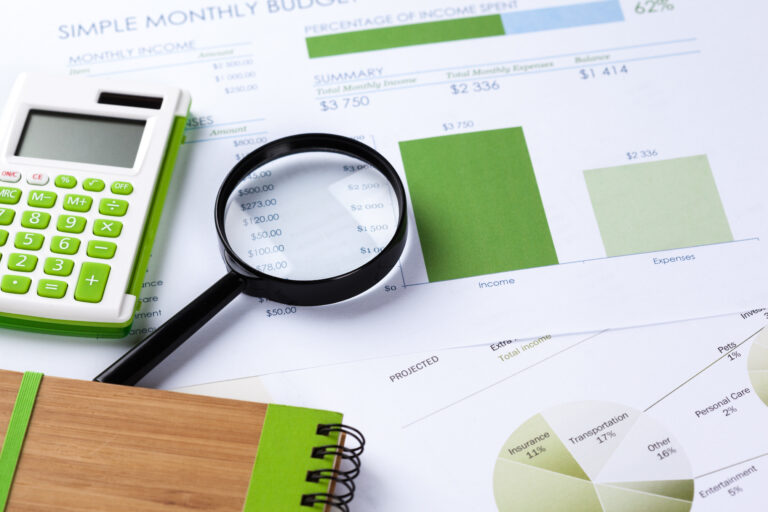How to Read a Profit and Loss Report
It seems like a simple enough report, but why is the Profit and Loss Report so important? What exactly does it tell us and why is it sometimes inaccurate?
Many business owners don’t really know how to read a Profit and Loss Report, apart from looking at the bottom line to work out if they are making money or losing it.
I was inspired to write this by a client who, after having done their bookkeeping for a number of years now, confessed he didn’t understand the P&L and doesn’t look at it. I was a little surprised as I printed them out for him, thinking he know what they were all about. His figures were not too bad and I thought he was actively planning his business and budgeting. In reality, he was just trading and if there was money in the bank, figured things were going well. I have since set up a meeting to go over what many bookkeepers and accountants find second nature, but many business owners are in the dark about.
It’s important to understand and regularly view financial reports on your business as the information will help you make business decisions that are crucial to your business’ success. Running a business without regularly monitoring it’s performance is like baking a cake without a recipe. Sometimes decisions pay off and sometimes they don’t.
Let’s start at the beginning.
The Purpose of the Profit and Loss Report
A Profit and Loss report (P&L) can be run over a specified period of time (a month, year to date, last quarter etc) and is basically a summary of the activity of the business.
The P&L will tell you how much income has been received, then deduct the costs for that period and leave you with a total which is called the Profit (if you have earnt more than you have spent), or a loss (if you have spent more than you have earnt)
Income
The Income is the total of invoices or sales you have invoiced through your business for the selected period. This amount is GST Exclusive and is accrual based. This means it is the total dollar figure of invoices based on the invoice date (regardless of when you received the payment). The Income amount usually doesn’t include investment income. This comes under a section called ‘other income’ at the bottom of the P&L. Your income is also called your ‘turnover’
In the example above, the total amount invoiced by this business over the period 01/01/15 to 31/01/15 was $19,210 (ex GST)
Cost of Goods Sold or Purchases
This is the total of all the expenses you have incurred that directly contributed to your income. If you buy and sell inventory, for example, your purchases are all the inventory items you purchased that were later sold by your business. Cost of goods sold can be items for sale, freight charges for these items, costs incurred to bring the purchased item into a saleable state etc.
If for example, you are a florist, your cost of goods sold (COGS) might include wholesale purchase of flowers, ribbons, wire, oasis, cellophane, freight etc. It would not include payroll as you cannot sell your staff, even though you have used your staff to sell your goods. Similarly, COGS does not include things like advertising (as although you needed to advertise to sell your goods, you did not sell your goods including the advertising) or other expenses we will cover below.
In the example above, this business spent $7,290 on purchases that directly contributed to the sales made of $19,210
Gross Profit
The gross profit is simply the income less the Cost of Goods Sold (or purchases). It indicates that this is the amount of profit leftover after the direct costs of goods sold that can be used by the business to cover other expenses and contribute to profit.
The gross profit can help you understand your markup percentages and is often expressed as a percentage of income.
If you run a business that has no cost of goods sold (particularly if you are a service provider), you gross profit will be equal to your income.
In our sample report, this business maintained a gross profit of $11,920 (19,210 – 7,290). This amount is to be used to pay for other expenses in the business.
Expenses
Apart from COGS, the expenses section covers all other business expenses. These should be categorised correctly according to your industry. They include operating expenses like power, telephone, rent etc, Administration expenses like subscriptions, training, staff amenities etc, Payroll expenses like wages, superannuation and workers compensation and other expenses like bank fees etc.
The gross profit is used to pay for these expenses as, although you cannot sell them, they are necessary for running your business.
In our sample P&L, the total expenses for running this business over the period of January 2015 was $10,170
Net Profit (Net Loss)
The total net profit or loss is the total of income, less cost of goods sold (or purchases) less expenses.
If the figure is positive, the business has made a profit. If the figure is negative, the business has made a loss over this date range
Important things to note about the P&L
The profit or loss is not indicative of how much money you should have in your bank account. Profit can be high while cashflow is low. Although a healthy profit can help with cashflow, it does not follow that you will have a healthy cashflow with a healthy profit.
Cashflow depends on other factors such as debtor collection rates, liabilities, loans, drawings etc.
The net profit or loss is not inclusive of directors or owners’ drawings. If the owner / director / shareholders take drawings, they do not affect the P&L at all.
The P&L does not show liabilities owed such as GST, PAYG instalments or PAYG withholding etc. It is simply and income and expense statement and does not reflect taxes accrued.
There are many different ways to view a P&L report. The sample shown here is the most basic. You can have the report compare periods, show you budget vs actual, print the expense categories in different levels of detail, show expenses as a percentage of income etc.
Once you understand how the P&L works, you should be able to play with these different report layouts and find some that suit your business.






